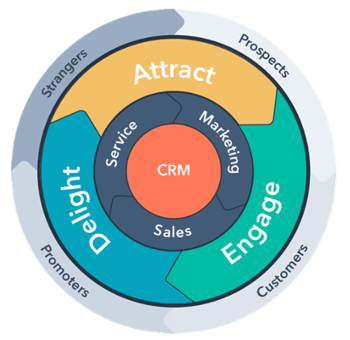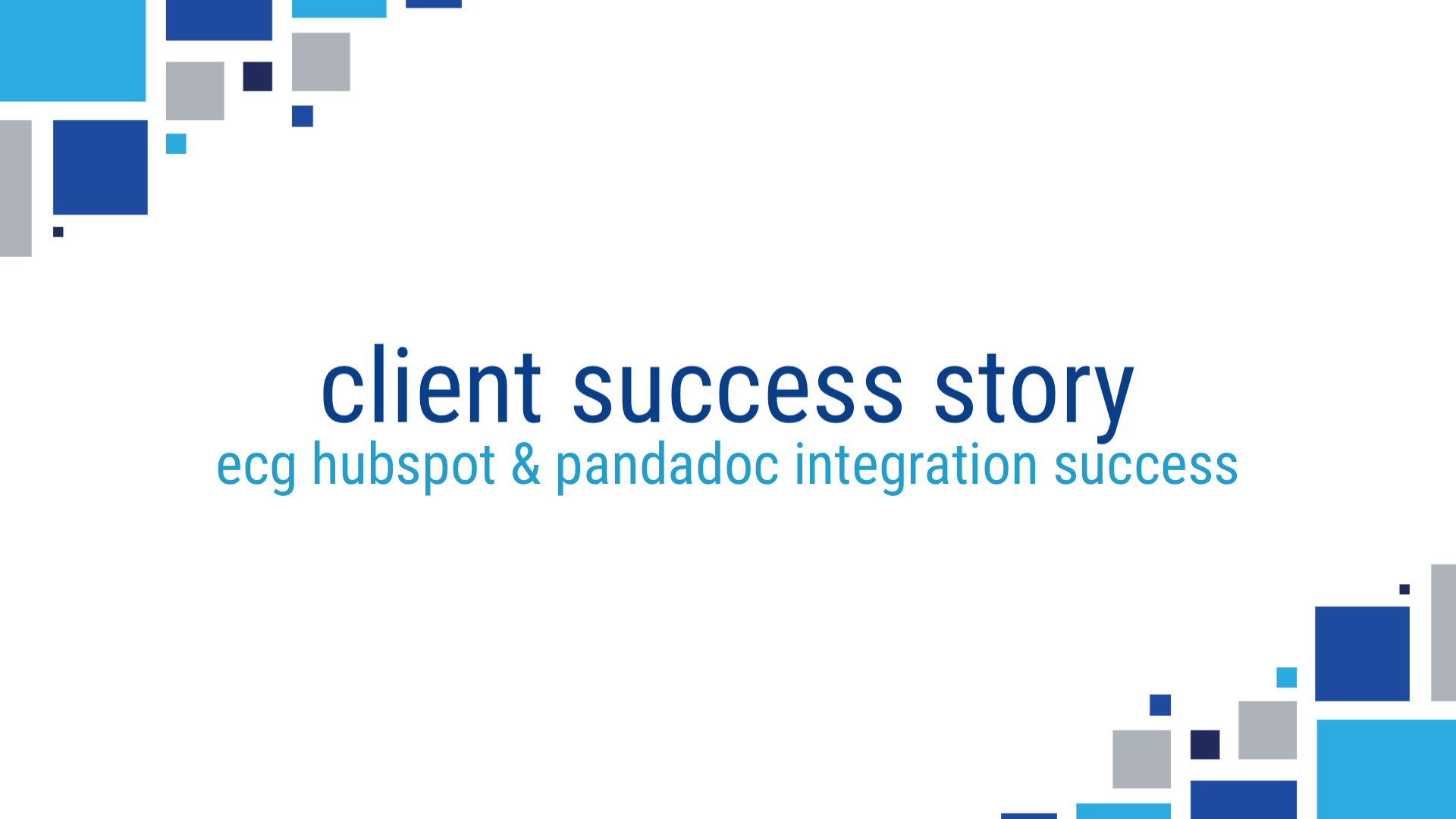Revenue River is now an Instrumental Group Company. Learn more.
call us: 303-945-4341
Revenue River is now an Instrumental Group Company. Learn more.

Catherine McGavin, Marketing and Sales Operations Leader for Emerald City Graphics, had a vision for a connected strategy that would simplify clients’ purchases of complex products with portal-driven ordering and fulfillment programs. She brought to the table a focus on lean principles: ones that would deliver client savings, speed to market, and revenue growth, powered by technology-driven solutions.
As with any endeavor to overhaul processes within an enterprise organization, Catherine had to weigh the potential risk against the potential gains. To mitigate the consequences of any potential failure, Catherine would start by building a proof of concept within Emerald City Graphics.
Since 1864, Fortune 500 company RR Donnelley (NYSE: RRD) has established a reputation for excellence as a global integrated communications provider. With $6.9 billion in annual sales and 42,000 employees servicing locations in North America, Latin America, Asia, and Europe, RR Donnelley has an extensive customer base across industries in private and public sectors.
RR Donnelley combines its global latitude with the local focus and specialties of its companies to create a powerful competitive advantage, enabling it to identify evolving industry dynamics and drive growth.
Emerald City Graphics (ECG) is an RRD company that specializes in custom retail packaging and marketing materials for companies in a diverse array of industries. Each month ECG mass- produces folding cartons and other print collateral that are driven by 350-400 unique graphic and structural designs. This combination of art and science requires close ongoing collaboration with customers throughout a complex manufacturing process.
Catherine started to seek out and implement best-of-breed technologies for her proof of concept. Like other RRD packaging plants, ECG has a local focus, and its web presence is designed to give potential customers a direct access point while seamlessly delivering leads and opportunities to sales staff. What started as a HubSpot website quickly turned into an expansion onto the CRM to further enhance those customer interactions.
When Catherine began to address customer interaction within ECG’s HubSpot set-up, she looked at PandaDoc as a way to pull information from HubSpot to move quickly through the complex process of specifying, quoting, selling, and setting up production for intricate retail packages. This additional piece of technology, in her view, could be the beginning of enacting the digitally-driven order and fulfillment process.
At that point, Catherine realized that neither tool was equipped out of the box to handle the level of complexity involved in her unique business case. PandaDoc put her in touch with Revenue River. As HubSpot Diamond Partners and PandaDoc partners, Revenue River was in the unique position of having a significant depth of expertise in both tools.
What began as some simple questions about some integration work eventually turned into a case study on connected strategy¹; on how you can leverage technology to improve the customer experience while improving operational efficiencies. It’s a story of a change agent within a well-established industry that was driven by an insight that her organization’s paper processes were inefficient; that centralized data aggregation would lead to customer insights and improved customer experience.
The business and technical acumen shared across four organizations (Emerald City Graphics, HubSpot, PandaDoc, and Revenue River) would enable these changes—with an outcome that’s only amplified by the shared organizational values of these organizations, namely, that the customer comes first, and that a well-architected digital strategy can have an enormous impact.
Once we began discussions with Catherine, it became clear that a lot was on the line outside of just the technical aspect of the integration. Catherine’s reasons for wanting the integration were much more profound.
When sharing her vision, Catherine always returns to the importance of the customer. And with the way things were, the paper workflows currently in place at Emerald City Graphics came at the (too) high cost of risk for human error. Throughout our discussions, we learned that there were about 970 data points that went into the successful delivery of an order for a customer. If any of those data points were wrong, according to Catherine, “it blows the whole project.”
She explains:
“The impact of getting information correct and eliminating human error across the entire manufacturing process goes beyond any revenue or cost savings to us because it has such a huge impact on our customer. The revenue on a typical packaging project for us might be $5,000 to $50,000, which we can recover from, but to our customer, it’s their whole business.”

With this context in mind, it made sense why this integration was so crucial to Catherine and enabled us to be strategic partners with ECG during their digital transformation rather than solely playing an execution role.
In short, the challenges to overcome can be summarized:
While identifying these challenges was an essential first step, it’s the technical implementation that became the challenge. The challenges for technical implementation can be broken down into two sub-challenges:
In many scenarios, the flow of information from HubSpot to PandaDoc adds exponential efficiency savings when putting together documents. However, for ECG to extract the value they needed from the software, they needed the tools to speak bi-directionally. Meaning, they wanted to be able to send the document to a customer, get input from the customer into the document, and then store that data within PandaDoc and HubSpot. This would require advanced customization of the integration.
Beyond the integration, as HubSpot Diamond Partners, we wanted to bring our strategy and technical expertise to transform ECG’s use of HubSpot in a way that would inject speed and efficiency into a complex workflow.
The first challenge with applying HubSpot to their unique process was that fields live in “Property Groups” inside of HubSpot, and those Property Groups are alphabetized. While this method is a useful framework for organizing property groups on a small scale, on a larger scale, it was inconsistent with an efficient workflow. They needed HubSpot to match as closely to the order of the flow of information they are getting from user and customer inputs for projects.
Then, once we established Property Groups within HubSpot, ECG would need a way to enter information in a way that was intuitive to their sales process as they gathered 900+ data points from their customers.
The integration-specific challenges can be summarized:
The challenges to ensure adoption would be:
"Being a HubSpot Diamond agency and PandaDoc partner with a depth of expertise in both tools definitely gave us an advantage that we passed along to ECG. This expertise allowed us to adapt the technology quickly to ECG's unique business case with functionalities like webhooks. "

Once we understood what ECG’s ideal process would look like, we were able to build a framework for the technical means to implement that process.
By collaborating with Catherine and the team at ECG, we mapped out the entire quote-to-production workflow to look for points where we could introduce efficiency with HubSpot and PandaDoc. The workflow accounts for inputs from 6 entities (the customer, sales, CAD design, estimating, planning/PM, and accounting), 6 different communication types (paper/PDF, JOBZ specification form, PSI production form, special purpose CAD and scheduling forms, and email messages), and 4 sub-workflows that make up the entire process (request for estimate, quote to order, production, and invoice).
Fig. 1. Map of the state of the internal workflows at ECG before HubSpot-PandaDoc integration with 5 different communication methods. Click to expand.
In line with the customer-centric approach of ECG, we worked with Catherine to understand the Buyer’s Journey from Stranger to Evangelist and how it mapped to their current HubSpot instance.
Fig. 2: View of how ECG’s HubSpot instance was set up to align with the Buyer’s Journey. Click to expand.
Once we understood in detail the internal processes and their role within the Buyer’s Journey, we set about bending the technology to create maximum efficiency for this process. Limitations in the functionality of the tools were met with ideas for customization to avoid adding friction to an already complex process. By combining the two maps of the current state, we made a new map showing where HubSpot and PandaDoc would do the lifting in each part of the process:
Fig. 3: View of updated process by Revenue River in collaboration with Catherine at ECG to leverage technology, streamline processes, and improve user experience using the HubSpot and PandaDoc integration plus internal forms.
Once the ideal workflow was created in LucidChart, it was time to take the process from paper to technical set-up.
For the process to work at all, it was essential to create the bi-directional functionality that would allow for user input into PandaDoc that could then feed back into HubSpot. We accomplished the build of this non-native functionality through webhooks.
Another must-have to make the HubSpot-PandaDoc integration a viable foundation for ECG’s processes was the development of an internal forms widget. The internal forms widget would allow ECG employees to input customer and project data in a way that was intuitive to the sales process.
Fig. 4 (Left): View of Internal Forms Widget with “Get Help” Button for ECG users to access directly from inside the CRM. Click to expand.
Fig. 5 (Right): Example of an Internal Form that can be accessed by the ECG team from a list of forms inside the CRM. These forms help align the order of Deal Properties in HubSpot with ECG’s internal processes and workflows. Click to expand.
Additionally, we determined that the ability to duplicate a deal would allow ECG to deliver projects faster for their repeat customers. With over 900 deal properties that need to be manually entered for each order, clicking a button to duplicate deals for resales saves countless hours. Deal duplication was another non-native functionality that we had to build.
Finally, we had to ensure adoption. We solved this through frequent communication and training with both Catherine and the end-users. We set up a weekly cadence with Catherine to present updates on the technology piece and discuss the next steps in a very block-and-tackle style approach.
Feedback from users was crucial to ensure the system worked for them. We set up a Slack channel, and a collaborative feedback log in the form of a Google Sheet that would capture and action user feedback. When working with ECG, we were mindful of our own customer experience and created a “Get Help” widget that would allow an ECG user to submit support tickets directly from the CRM (see Fig. 4).
For Catherine, it’s hard to fathom the ROI of this transition. She says:
“The ROI of this project can be compounded so quickly. The operational efficiency is a huge piece -- getting the correct information in the correct hands in a process that goes through multiple hands and more than 50 process steps. But the real benefit is in the fact that the customer goes to market with exactly the right packaging for their product.”

With the PandaDoc-HubSpot integration in place, ECG has achieved major milestones toward the ideal connected strategy: the transformation of traditional, single episodic interactions with customers into fluid customer transactions that are characterized by low friction, speed and a dramatic reduction in human error. This proof of concept opens up additional savings in operational efficiency and the ability to scale across other divisions at RRD.

If this description sounds like HubSpot’s vision of the flywheel, then you can understand some of the ways that the shared values of the organizations involved—HubSpot, PandaDoc, ECG, and Revenue River— led to an outcome with the compounded success that comes when vectors are aligned. Those values are customer-centricity achieved through well-architected connected technology and strategy.
Fig. 6: Diagram of the customer-centric flywheel that represents the relationship between sales, marketing, and service with the customer at the center and the technologies that enable the flywheel at each stage.
The successful proof of concept in ECG is just the beginning. Corporate leaders at RRD are now interested in exploring how ECG’s process based on the HubSpot-PandaDoc integration can become the standard across their 10 packaging plants.
Once the process is applied to other divisions, the results from this integration work will be 10x what we’ve achieved in the original scope.
Due to the success of the partnership between Revenue River and Catherine as the technology advocate at RRD, we plan to continue to find efficiencies and make Catherine’s vision a reality, maybe even beyond what she thought possible when she first approached us.
The deeper we go with discovery as organizations, the more we’re able to solve for ECG’s customer and their internal team. We’ve taken a very iterative approach, constantly looking forward, prioritizing, and collaborating. With Catherine’s vision and Revenue River’s technical and strategic capabilities, we can literally create and invent as we go to make Catherine’s vision a reality.
Catherine is grateful that the HubSpot API allows us to be creative in our vision and implementation.
“The nice thing about where we are today is that HubSpot has an open API ready to accept and exchange data with other systems we are upgrading. Emerald City Graphics will continue to provide proof of concept as we apply these learnings and processes to other RRD manufacturing plants.”

RRD will continue to use ECG as the proof of concept and apply learnings and processes to the 10 manufacturing plants and hundreds of print shops globally.
As for Revenue River, we’re excited to see what new challenge or vision Catherine will bring to us to improve RRD and fuel their growth as a global enterprise.
¹Siggelkow, Nicolaj & Terwiesch, Christian. (2019) Connected Strategy: Building Continuous Customer Relationships for Competitive Advantage. Boston, Massachusetts: Harvard Business Review Press.
